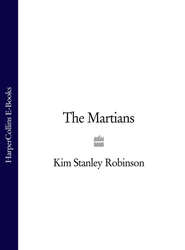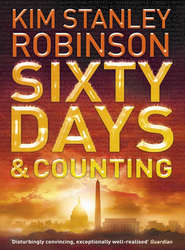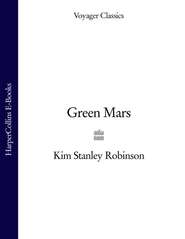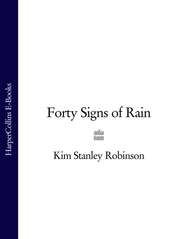По всем вопросам обращайтесь на: info@litportal.ru
(©) 2003-2024.
✖
Galileo’s Dream
Настройки чтения
Размер шрифта
Высота строк
Поля
Galileo swatted at him. The compass had become a pain, there was no denying it. ‘You have the materials you need?’
‘No. I think we’ll need more lead tubes, and thinner staves than what we’ve got around, and longer, if you want leather tubes. More cardboard too. And you’ll want more lenses.’
‘I’ll send an order to Florence. Meanwhile let’s work with what we’ve got.’
In the days that followed, every moment was given over to the new project. Galileo neglected his collegial obligations, made his boarding students teach each other, ate his meals in the workshop while he worked: nothing mattered but the project. At times like these it became obvious that the workshop was the centre of the house. The maestro was about as irritable as always, but with his attention elsewhere it got a bit easier for the servants.
While the various efforts of manufacture and assemblage and testing went on, Galileo also took time to write his Venetian friends and allies to set the stage for a presentation of the device. Here was where his career up until this point finally helped him in something. Known mostly as an eccentric if ingenious professor of mathematics, broke and frustrated at forty-five, he had also spent twenty years working and playing with many of the leading intellectuals of Venice, including, crucially, his great friend and mentor Fra Paolo Sarpi. Sarpi was not currently running Venice for the Doge, as he was still recovering from wounds suffered in an assault two years before, but he continued to advise both the Doge and the Senate, especially on technical and philosophical matters. He could not have been better positioned to help Galileo now.
So Galileo wrote to him about what he was working on. What he read in Sarpi’s reply startled him, even frightened him. Apparently the stranger from the artisans’ market had gone to others as well. And his news of a successful spyglass, Sarpi wrote, was apparently already widespread in northern Europe. Sarpi himself had heard a rumour of such a thing nine months before, but had not considered it significant enough to tell Galileo about it.
Galileo cursed as he read this. ‘Not significant, my God!’ It was hard to believe; it was so lame it suggested that his old friend had been mentally damaged by the knives that had been stuck in his head during the assault.
Nothing to be done about that now. People in northern Europe, especially the Flemish and Dutch, were already producing little spyglasses. This Dutch stranger, Sarpi wrote, had contacted the Venetian Senate, offering to sell them such a glass for a thousand florins. Sarpi had advised the Senate against the purchase, certain that Galileo could do as well or better in manufacturing any such object.
‘I could if you would have mentioned it to me,’ Galileo muttered.
But he hadn’t, and now news of the device was in the air. It was a phenomenon Galileo had noticed before; improvements at the artisanal level passed from workshop to workshop without scholars or princes knowing anything about them, and so it often happened that suddenly workshops everywhere could all make a smaller gear, or a stronger steel. This time it was a little spyglass. The claim going around was that they enlarged things by about three times.
Quickly Galileo wrote back to Sarpi, asking him to convene a meeting with the Doge and his senators in order to examine a new and improved spyglass that Galileo was inventing. He also asked him to ask the Doge to refuse to entertain any other such offers during that time. Sarpi replied the next day with a note saying he had done as asked, and the requested meeting was set for 21st August. It was now 5th August. Two weeks to make a better glass.
The action in the workshop intensified. Galileo told his frantic students they were on their own, even Count Alessandro Montalban, who had recently moved in to the house to study for his doctoral exams, and was not pleased at being neglected. But Galileo had tutored many sons of the nobility by now, and brusquely he told the young man to study with the others, to lead them, that it would be good for him. Galileo then moved out into the workshop, where he examined very closely the devices they had made already, trying to figure out how to better them.
Understanding what was going on with the doubled lenses was no easy thing. For Galileo, everything physical came down to matters of geometry, and clearly this bending of the light was a geometrical action; but he lacked any laws of refraction, and could not discover them merely by substituting lenses one after the next. There were tangible variables involved, however, that they could subject to the workshop techniques they had already honed in previous pursuits.
So the workshop’s artisans met in the hour after sunrise, some of them servants of the house, others local ancients retired from arsenals, or lads from the neighbourhood; still rubbing the sleep from their eyes, squeezing the bellows to get the fires in the furnaces going, picking up the work they had laid down the night before. They followed Galileo’s routines: they measured things twice, wrote everything down. They worked while breaking their fast. Watched the rainstorms out of the open side of the shed, waiting for the light to get better so they could get back to work. The brick furnace was a bulwark just outside the roof, and they could stand near the back of it and stay warm while the rain came down, although as it was summer the afternoon thunderstorms weren’t so cold. The large central area of the shop was earthen-floored and held several long tables, one of them under the back wall devoted to all their tools. In the dim rain-light they could clean or sharpen tools, put things in order, pick away at the goose carcass from the night before. When the sun came out they returned to the work.
They made so many alterations in every new spyglass, Galileo was not quite sure what change was having what effect; but it was too interesting to slow down and isolate the variables to make sure of things, except when pursuing a crucial point. The epistemology of the hunt was to follow one thing after another, without much of an overall plan. They found that tubes made of cardboard, sometimes reinforced by slats or covered with leather, worked perfectly well; the interiors did not have to be perfectly smooth, although one saw a clearer image if they were painted black. Most important were the lenses. The one next to the eye they called the eyepiece, the one at the far end, the objective. Both concave and convex lens surfaces, if properly ground, constituted sections of spheres, bulging either in or out. Spheres of differing radii gave different curvatures. The radius of the complete sphere that was implied by a lens, Galileo called its focal length, following the lensmakers’ usage. Fairly soon their repeated trials with different lenses revealed that larger magnifications resulted from a long focal length for the convex lens at the far end of the tube, combined with a short focal length for the concave lens of the eyepiece. Grinding the convex lenses was easy enough, although it was important to eliminate small irregularities if possible, as these made for blurred patches. Grinding truly smooth curved depressions into the much smaller concave lenses, however, was harder to do. A small ball set in a rotating steel-milling mechanism that they screwed to one of the work tables served as their grinding tool. To see better they wore spectacles made of lenses ground earlier in the effort.
While this was going on Mazzoleni was also making cardboard tubes that would snug into his main tubes of leather and staves, giving them the ability to adjust the distance between the lenses and thus sharpen the image. The eyepieces were smaller, so they put the drawtube at that end, and fitted it with felt shims.
To find out what degrees of magnification they were getting, Galileo affixed a gridwork to a whitewashed part of the garden wall. This enabled him to measure accurately the difference between the enlarged image of the grid and the image he saw through the other eye at the same time.
On the afternoon of the seventeenth of August, Galileo examined their three best performers. All were about the same length, which was just over a braccio, as measured by their in-house yardstick. Studying the notes, Galileo compared all their dimensions, scribbling more notes as he did so.
All at once he laughed out loud. One of his special moments had come again, a flash of sudden insight at the end of a period of investigation, giving him a jolt and a shiver, as if he were a bell and the clapper had just tapped him. He shouted, ‘MAT ZO LEN EEEEEEE!’
The old man appeared, more dishevelled and whiskery than ever, red-eyed with lack of sleep. ‘Look!’ Galileo commanded. ‘You take the focal length of the objective-for this one, a hundred minims-and you divide that by the focal length of the eyepiece-in this case eleven minims-and you get a number which identifies the power of magnification of the device, thus here about nine times! It’s a ratio! It’s a ratio, it’s geometry again-’ He seized the old man by the shoulder: ‘Not only that, but look! Subtract the eyepiece focal length from the objective focal length, and you get the distance apart that the lenses are when the thing is focused properly! In this case, just short of one braccio. It’s a simple piece of subtraction!’
At this realization he grew somewhat glorious, as he often did when he was able to say new things of that sort. He congratulated everyone in the household, called for wine, threw crazia and other small coins at the servants and students who poured out into the courtyard to join the celebration, hugged them one by one while he was giving thanks to God and also indulging his most boastful humour, which was something to witness. He praised his genius for coming through for him again, he danced, he laughed, he grabbed Mazzoleni by the ears and shouted in his face:
‘I’m the smartest man in the world!’
‘Probably so, maestro.’
‘The smartest man in history!’
‘That’s how much trouble we’re in, maestro.’
This kind of poke in these moments of glory would only make him laugh and toss Mazzoleni aside, to be able to continue his jig. ‘Florins and ducats, crowns and scudi, I’ll buy Rachel and I’ll buy Trudi!’
No one in the household understood quite why he believed the glass was going to make him rich. The servant girls thought he meant to use it to watch them doing the laundry down at the river, which he did already from what he thought was a discreet distance.
Eventually everyone went back to work. Mazzoleni was left holding the glass, shaking his head at it. ‘Why should there be such proportions?’ he asked.
‘Don’t ask why.’ Galileo snatched up the glass. ‘Why is what our philosophers ask, and that’s why they’re so full of shit. Because we don’t know why. Only God knows why. If He does.’
‘All right, I know. Just ask what, just ask how. Still. You can’t help but wonder, can you.’ Waving at the new page of Galileo’s folio, filled with diagrams and numbers. ‘It seems so…’
‘So neat? Yes. Quite a coincidence, for sure. Quite the what-have-you. But it’s just more proof of what we already knew. God is a mathematician.’
As a mathematician himself, Galileo found saying this sentence immensely satisfying; often it was enough to bring tears to his eyes. God is a mathematician. He would emphasize the thought by taking a hammer to their anvil. And indeed the thought rang him like a bell. He would bring his hands together as if in prayer, and take a deep breath and expel it tremulously. To read God like a book; to solve him like an equation; it was the best sort of prayer. Ever since that time when he was a boy, he would explain, when he had looked up in church and seen a lamp swinging on its chain, and realized by timing it to his pulse that it took the same time to make its sweep back and forth no matter how far it was swinging, he had felt the direct touch of God in all these things. There was a method to His madness, clearly, and that method was mathematics. This was a comfort when the madness seemed all, as when he was sick, or in pain, or struck down by melancholy; or witnessing the effects of the plague; or contemplating the immense realm of human wickedness. Then his only comfort was the world’s inherent geom-etries.
The day for his Venetian demonstration approached, and their best tube showed things nine times larger than the eye saw it. Galileo wanted better, and thought he knew how to get it, but time had run out. For now, nine times bigger would have to do.
He had Mazzoleni’s crew cover the exterior of the best tube with red leather, embossed with decorative patterns in gold filigree. Mazzoleni also adapted a tripod stand that they sold as an accessory to the military compass, so that they would have something to hold the spyglass steady. A joint on top of the tripod was made of a metal ball held captive in a hemispherical cup, with one screw through the cup to tension the ball, which was screwed on top into a brass sleeve wrapping the spyglass. Using the tripod one did not have to hold the glass steady while looking through it, something no one could do for more than a second or two. It vastly improved the view through the glass.
The resulting arrangement was a handsome thing, standing there gleaming in the sunlight, strange but purposeful, immediately intriguing, pleasing to both eye and mind. A month earlier there had been no such thing in the world.
On 21st August, 1609, he ferried in to Venice on the morning barge, the looking glass and its stand in a long leather case slung from a strap over his shoulder. Its shape was suggestive of a pair of swords, and he saw the glances of people looking at it and thought, Yes, I’m going in to cut the Gordian knot. I’m going in to cut the world in two.
Venice stood on the lagoon, its usual grubby midday self. Magnificence at low tide. Galileo got off the ferry at the molo at San Marco, and was greeted there by Fra Paolo. The great friar looked gaunt in his best robes, his face still a wreck, as it always would be; but his crooked smile remained kindly, his look still penetrating.
Galileo kissed his hand. Sarpi patted the case gently: ‘So this is your new occhialino?’
‘Yes.’
‘Very good. Your audience is assembled in the Anticollegio. It’s everyone who matters, you’ll be happy to know.’
An honour guard assembled in response to Sarpi’s nod, and escorted them into the Signoria, up the Golden Staircase into the Anticollegio, which was the anteroom to the Signoria’s bigger halls. It was a tall chamber, sumptuously decorated overhead in the usual Venetian style, its octagonal ceiling covered with giltframed paintings allegorizing the origin myth of Venice, while the floor underfoot was painted like the pebbled bed of a mountain stream. Galileo had always found it a strange space, in which he had trouble focusing his eyes.
Now it was stuffed with dignitaries. Better yet, as Galileo soon learned, the Doge himself, Leonardo Dona, was waiting in the Sala del Collegio, the larger assembly hall next door that was the most sumptuous room in the Signoria. As he entered the room he saw Dona and the Savi, his six closest advisors, along with the Grand Chancellor and other state officials, all gathered under the long painting of the battle of Lepanto. Sarpi had outdone himself.
Now the great Servite led Galileo to the Doge, and after a cordial greeting Dona led the entire group into the Sala delle Quattro Porte, then to the Sala del Senato, where many more senators stood in their purple around tables loaded with food. Under the intricacy of crowded paintings and gilt trim that covered every wall and ceiling, Galileo pulled the two parts of his device from their case, and screwed the spyglass on top of the tripod. His hands moved without a quiver; twenty years of lecturing to audiences large and small had burned all possibility of stage fright out of him, and it was also true that it was never that difficult to speak to a crowd to which you felt innately superior. So even though all his hundreds of lectures were now only the prelude to this culmination, he was calm and at ease as he described the work done to make the device, indicating its various features as he pointed it at Tintoretto’s ‘Triumph of Venice’ on the ceiling at the far end of the room, fixing the image in the glass so that it revealed the tiny face of an angel enlarged to the point that it stood out even more vividly than Mazzoleni’s had on that first night of work.
With a sweep of his hand he invited the Doge to have a look. The Doge looked; pulled away to gaze at Galileo, his eyebrows shot high onto his forehead; looked again. The two big clocks on the long side wall marked ten minutes’ passage as he bumped the glass from one view to another. Ten more minutes passed as one purple-robed man after another took a look through the glass. Galileo answered every question they had about how it was made, although failing to bring up the ratios he had discovered, which they did not even know to ask about. He volunteered often that the process being now clear to him, future improvements were certain to follow, and also (trying to hide a growing impatience) that it was not the kind of device that could best be demonstrated in a room, even a room as big and magnificent as the Sala del Senato. Finally the Doge himself echoed this point, and Sarpi was quick to suggest that they take the device to the top of the campanile of San Marco to give it a thorough airing. Dona agreed to this, and suddenly the whole assembly was following him out of the building and across the Piazzetta between the Signoria and the campanile, then inside the great bell tower, winding up the tight iron staircases to the open observation floor under the bells. Here Galileo reassembled the device.
The floor of the viewing chamber stood a hundred braccia above the Piazza. It was a place all of them had been up to many times; from here one could overlook the whole of Venice and the lagoon, and spot the passageway through the Lido at San Niccolo, the only navigable channel into the Adriatic. Also visible to the west was a long stretch of the mainland’s marshy shore, and on clear days one could even see the Alps to the north. A better place to display the powers of the new spyglass could not have been found, and to aim it Galileo looked through the device with as much interest as anyone else, or even more; he had not yet had an opportunity like this, and what could be seen through the glass was as new to him as the next man. He told them as much as he worked, and they liked that. They were part of the experiment. He stabilized and sighted the glass very carefully, feeling that a little delay at this moment was not a bad thing, in theatrical terms. As always, the image in the eyepiece shimmered a little, as if it were something conjured in a crystal ball by a magician-not an effect he wanted, but there was nothing he had been able to do about it. Feeling a sharp curiosity, he tried to spot Padua itself; on earlier visits to the campanile he had marked the vague tower of smoke coming from the town, and knew precisely where it lay.
When he got Padua’s tower of San Giustina centred in the glass, as clear as if he were on Padua’s city wall staring at it, he suppressed any shout, any smile, and merely bowed to the Doge and moved aside, so Dona and then the others could have a look. A little touch of the mage’s silent majesty was not inappropriate at this point, he judged.
For the view was in fact astonishing. ‘Ho!’ the Doge exclaimed when he saw San Giustina. ‘Look at that!’ After a minute or two he gave over the glass to his people, and after that the rush was on. Exclamations, cries, incredulous laughter: it sounded like Carnivale. Galileo stood proudly by the tube, readjusting it when it was bumped. After everyone had had a first look, he spotted terra ferma towns even more distant than Padua, which itself was twenty-five miles away: Chioggia to the south, Treviso to the west, even Conegliano, nestled in the foothills more than fifty miles away.
Moving to the northern arches, he trained the glass on various parts of the lagoon. These views made it clear that many of the senators were even more amazed to see people brought close than they had been buildings; perhaps their minds had leaped as quickly as Galileo’s servants to the uses of such an ability. They gazed at worshippers entering the church of San Giacomo in Murano, or getting into gondolas at the mouth of the Rio de’ Verieri, just west of Murano. Once one of them even recognized a woman he knew.
After that round of viewing Galileo lifted the device, helped now by as many hands as could touch the tripod, and the whole assembly shifted together to the easternmost arch on the southern side of the campanile, where the glass could be directed over the Lido and the fuzzy blue Adriatic. For a long time Galileo tapped the tube gently from side to side, searching the horizon. Then happily he spotted the sails of a little fleet of galleys, making their final approach to the Serenissima.
‘Look to sea,’ he instructed them as he straightened and made room for the Doge. He had to restrain himself to remain serious, to hide his euphoria. ‘See how using one’s plain sight, one sees nothing out there. But using the glass…’











